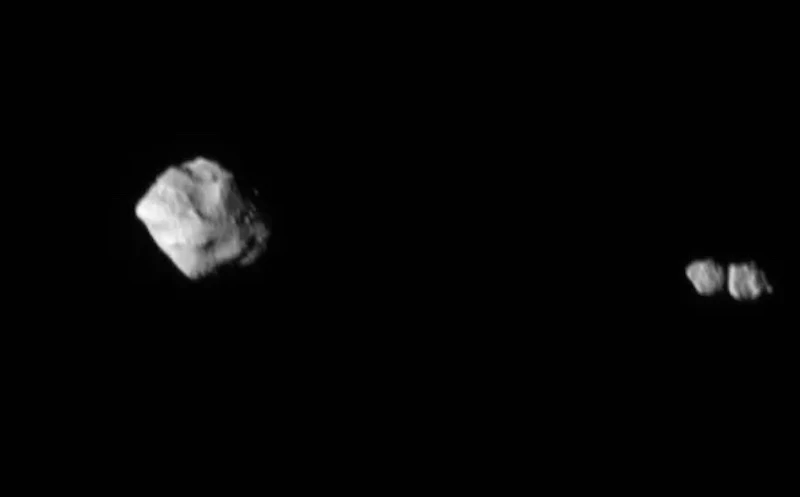NASA’s asteroid-exploring spacecraft Lucy has made its first up-close observations – and discovered something completely unexpected. The asteroid Dinkinesh not only has a small satellite orbiting it, but that mini-moon is made up of two objects stuck together.
Launched in 2021, Lucy is set to visit more asteroids than any other spacecraft so far. Its main mission is to investigate the Trojans, two clusters of asteroids orbiting the Sun at the distance of Jupiter – one ahead of and one behind the giant planet. On the way, it’s performing a kind of test run on asteroids in the main belt just beyond Mars, including this first target.
Known as Dinkinesh, this asteroid wasn’t really expected to throw up any surprises – it was merely meant to help the science team test how well Lucy could track asteroids and snap photos as it whizzes past them at 16,000 km/h (10,000 mph). But in the weeks as the craft approached, the asteroid’s brightness seemed to be changing over time.
On November 1, Lucy was finally close enough to start snapping photos, and they quickly revealed the reason for the changing brightness: a small satellite object was discovered orbiting the main body of Dinkinesh. From these images, the team estimates that the bigger object measures about 790 m (2,592 ft) wide, and the smaller one is about 220 m (722 ft).
Things got even weirder after more data was downloaded. Just six minutes later, Lucy snapped another set of photos as it departed Dinkinesh, and from that angle it was clear that the asteroid’s moon was actually made up of two distinct objects. In the original images, the second object was hidden behind the first.

These two objects are so close that they’re actually touching each other, forming what’s called a contact binary. It’s not the first such object found, but it is the first one ever seen orbiting an asteroid, and its existence raises a few questions.
“It is puzzling, to say the least,” said Hal Levison, principal investigator for Lucy. “I would have never expected a system that looks like this. In particular, I don’t understand why the two components of the satellite have similar sizes. This is going to be fun for the scientific community to figure out.”
There’s still more data to download from Lucy’s close encounter with Dinkinesh, and of course, this is just the first of many asteroid fly-bys for the spacecraft. Lucy will venture deeper into the main asteroid belt to visit Donaldjohanson in 2025, before journeying to the Trojans where it will image at least seven more asteroids starting in 2027. If the very first visit was this surprising, who knows what the others might hold.




